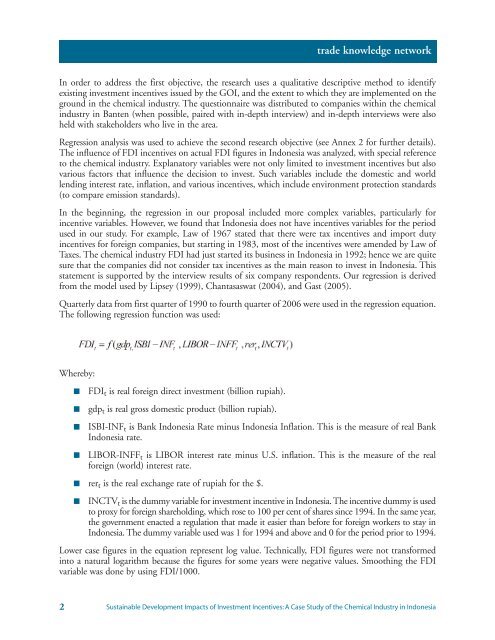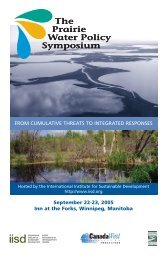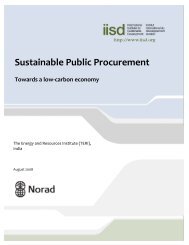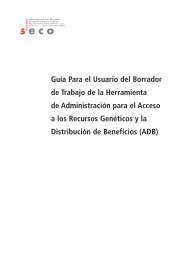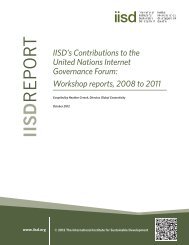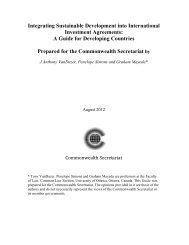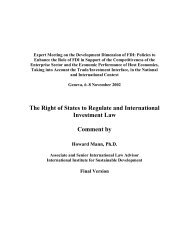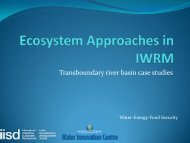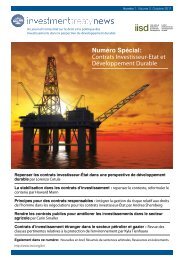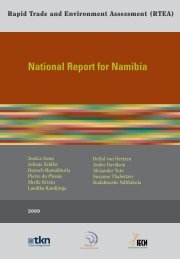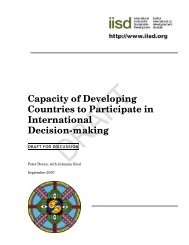Sustainable Development Impacts of Investment Incentives: A Case ...
Sustainable Development Impacts of Investment Incentives: A Case ...
Sustainable Development Impacts of Investment Incentives: A Case ...
Create successful ePaper yourself
Turn your PDF publications into a flip-book with our unique Google optimized e-Paper software.
trade knowledge network<br />
In order to address the first objective, the research uses a qualitative descriptive method to identify<br />
existing investment incentives issued by the GOI, and the extent to which they are implemented on the<br />
ground in the chemical industry. The questionnaire was distributed to companies within the chemical<br />
industry in Banten (when possible, paired with in-depth interview) and in-depth interviews were also<br />
held with stakeholders who live in the area.<br />
Regression analysis was used to achieve the second research objective (see Annex 2 for further details).<br />
The influence <strong>of</strong> FDI incentives on actual FDI figures in Indonesia was analyzed, with special reference<br />
to the chemical industry. Explanatory variables were not only limited to investment incentives but also<br />
various factors that influence the decision to invest. Such variables include the domestic and world<br />
lending interest rate, inflation, and various incentives, which include environment protection standards<br />
(to compare emission standards).<br />
In the beginning, the regression in our proposal included more complex variables, particularly for<br />
incentive variables. However, we found that Indonesia does not have incentives variables for the period<br />
used in our study. For example, Law <strong>of</strong> 1967 stated that there were tax incentives and import duty<br />
incentives for foreign companies, but starting in 1983, most <strong>of</strong> the incentives were amended by Law <strong>of</strong><br />
Taxes. The chemical industry FDI had just started its business in Indonesia in 1992; hence we are quite<br />
sure that the companies did not consider tax incentives as the main reason to invest in Indonesia. This<br />
statement is supported by the interview results <strong>of</strong> six company respondents. Our regression is derived<br />
from the model used by Lipsey (1999), Chantasaswat (2004), and Gast (2005).<br />
Quarterly data from first quarter <strong>of</strong> 1990 to fourth quarter <strong>of</strong> 2006 were used in the regression equation.<br />
The following regression function was used:<br />
Whereby:<br />
■<br />
■<br />
■<br />
■<br />
FDI t is real foreign direct investment (billion rupiah).<br />
gdp t is real gross domestic product (billion rupiah).<br />
ISBI-INF t is Bank Indonesia Rate minus Indonesia Inflation. This is the measure <strong>of</strong> real Bank<br />
Indonesia rate.<br />
LIBOR-INFF t is LIBOR interest rate minus U.S. inflation. This is the measure <strong>of</strong> the real<br />
foreign (world) interest rate.<br />
■ rer t is the real exchange rate <strong>of</strong> rupiah for the $.<br />
■<br />
INCTV t is the dummy variable for investment incentive in Indonesia. The incentive dummy is used<br />
to proxy for foreign shareholding, which rose to 100 per cent <strong>of</strong> shares since 1994. In the same year,<br />
the government enacted a regulation that made it easier than before for foreign workers to stay in<br />
Indonesia. The dummy variable used was 1 for 1994 and above and 0 for the period prior to 1994.<br />
Lower case figures in the equation represent log value. Technically, FDI figures were not transformed<br />
into a natural logarithm because the figures for some years were negative values. Smoothing the FDI<br />
variable was done by using FDI/1000.<br />
2<br />
<strong>Sustainable</strong> <strong>Development</strong> <strong>Impacts</strong> <strong>of</strong> <strong>Investment</strong> <strong>Incentives</strong>: A <strong>Case</strong> Study <strong>of</strong> the Chemical Industry in Indonesia


